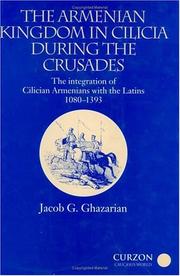| Listing 1 - 3 of 3 |
Sort by
|
Book
ISBN: 9781575062808 1575062801 Year: 2014 Volume: 19 Publisher: Winona Lake, Indiana : Eisenbrauns,
Abstract | Keywords | Export | Availability | Bookmark
 Loading...
Loading...Choose an application
- Reference Manager
- EndNote
- RefWorks (Direct export to RefWorks)
Hittite culture of the second millennium B.C.E. was strongly influenced by Mesopotamian culture, in part through the mediation of the peripheral cuneiform civilizations of northern Syria, in part through direct contact with Babylonia and Assyria. The text edited here (CTH 718) presents an extreme example of this cultural impact, featuring incantations in the Akkadian language (Hittite babilili) embedded within a ceremony set forth in the Hittite tongue. This ritual program has therefore become known to scholars as the “babilili-ritual.”With almost 400 preserved lines, this ceremony is one of the longest religious compositions recovered from the Hittite capital, and there are indications that a significant additional portion has been lost. The divine figure to whom the rite is addressed is Pirinkir, a variety of the well-known Ishtar of Mesopotamia. Its purpose seems to be the elimination of the sins of a member of the royal family.Many of the ritual activities and offering materials employed here are characteristic of the cult practice of the Classical Cilician region known as Kizzuwatna, which was introduced into the central Hittite realm during the final two centuries of the state’s existence. Nonetheless, the Akkadian of the incantations is neither the Akkadian employed in the Hurrian-influenced area of Syria and eastern Anatolia nor that otherwise known from the Hittite royal archives; rather, it is closer to the language of the later Old Babylonian period, even if no precise Mesopotamian forerunners can yet be identified.
Hittites --- Religion. --- Kizzuwatna (Cilicia) --- Akkadian language --- Religion --- Hittites - Religion --- Kizzuwatna (Cilicia) - Religion --- Akkadian language - Texts

ISBN: 9781138862579 1138862576 9780700714186 Year: 2014 Publisher: London : Routledge,
Abstract | Keywords | Export | Availability | Bookmark
 Loading...
Loading...Choose an application
- Reference Manager
- EndNote
- RefWorks (Direct export to RefWorks)
This unique study bridges the history of the Crusades with the history of Armenian nationalism and Christianity. To the Crusaders, Armenian Christians presented the only reliable allies in Anatolia and Asia Minor, and were pivotal in the founding of the Crusader principalities of Edessa, Antioch, Jerusalem and Tripoli. The Anatolian kingdom of Cilicia was founded by the Roupenian dynasty (mid 10th to late 11th century), and grew under the collective rule of the Hetumian dynasty (late 12th to mid 14th century). After confrontations with Byzantium, the Seljuks and the Mongols, the Second Crusade led to the crowning of the first Cilician king despite opposition from Byzantium. Following the Third Crusade, power shifted in Cilicia to the Lusignans of Cyprus (mid to late 14th century), culminating in the final collapse of the kingdom at the hands of the Egyptian Mamluks.
1080-1375. --- Cilicia --- Asia --- History --- Cilicia - History - Armenian Kingdom, 1080-1375
Book
ISBN: 9782705338985 2705338985 Year: 2014 Publisher: Paris: Geuthner,
Abstract | Keywords | Export | Availability | Bookmark
 Loading...
Loading...Choose an application
- Reference Manager
- EndNote
- RefWorks (Direct export to RefWorks)
La juxtaposition des noms "Méditerranée" et "Arméniens" peut paraître artificielle quand on évalue sur une carte la distance entre 'Arménie, enclavée à l'est de l'Asie Mineure, sans façade maritime, n la Méditerranée. Pourtant, les relations entre ces deux entités ont été intenses durant plusieurs siècles. En effet, pour des raisons liées aux invasions turques en Asie Mineure et à l'arrivée des croisés au levant, il s'est créé au XIIe siècle en Cilicie, dans l'angle nord-est de a Méditerranée, face à l'île de Chypre, une principauté arménienne, officiellement érigée en 1198 en un royaume d'Arménie hors du territoire de l'Arménie historique. Ainsi muni d'une ample façade maritime, ce royaume eut d'étroits contacts tant avec les puissances commerçantes méditerranéennes, en particulier Venise et Gênes, qu'avec l'Orient latin frontalier. Il fournit au royaume latin de Jérusalem trois reines, dont les deux premières : il était dès lors logique d'organiser dans la Ville sainte un colloque international consacré aux divers aspects de cette "Méditerranée des arméniens". On y traita en juillet 2009 des rapports arméno-latins tu Levant, des relations du royaume avec l'ensemble de l'Orient chrétien, avec le monde musulman et avec les Mongols arrivés dans a région au mie siècle, sans oublier les intenses échanges artistiques n commerciaux. Après la chute de ce royaume, en 1375, une partie de la population arménienne se maintint en Cilicie, mais il y eut également un important flux migratoire dans diverses directions, en particulier vers les rivages aux mains des Génois, familiers des Arméniens, font la Crimée que l'on peut considérer comme un prolongement de a Cilicie arménienne.
Cilicia --- Armenia --- Mediterranean Region --- History --- Foreign relations --- Foreign Relations --- Arménie --- Méditerranée (région) --- Cilicie (Turquie) --- Moyen âge --- Actes de congrès. --- Cilicia - History - Armenian Kingdom, 1080-1375 - Congresses --- Armenia - History - Turkic Mongol Domination, 1045-1522 - Congresses --- Armenia - Foreign relations - Mediterranean Region - Congresses --- Mediterranean Region - Foreign Relations - Armenia - Congresses
| Listing 1 - 3 of 3 |
Sort by
|

 Search
Search Feedback
Feedback About UniCat
About UniCat  Help
Help News
News